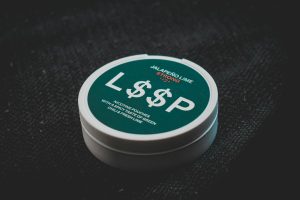Andrea Rabenstein, Yvonne Stoll, Marcus Gertzen, Benedikt Rieder, Sebastian Malke, Nestor Burgmann, Peter Laux, Elke Pieper, Thomas Schulz, Klaas Franzen, Andreas Luch, Tobias Rüther
Tobacco-free nicotine pouches are new nicotine products for oral consumption. They can contain very high nicotine amounts that have not been addressed with clinical studies yet. Thus, nicotine delivery, effects on craving, and side effects were assessed using pouches with up to 30 mg nicotine. In this single-center, five-arm, crossover study, 15 regular cigarette smokers consumed tobacco-free nicotine pouches from different brands with 6, 20, and 30 mg for 20 min. Comparators were nicotine-free pouches and tobacco cigarettes. At baseline and predefined time points over a study period of 240 min, plasma nicotine concentrations, effects on cigarette craving, and side effects were assessed. Cardiovascular parameters including arterial stiffness were measured using a MobilOGraph. Consumption of 30 mg nicotine pouches has led to a higher nicotine uptake compared with the cigarette (Cmax: 29.4 vs 15.2 ng/mL; AUC: 45.7 vs 22.1 ng/mL × h). Nicotine uptake in the acute phase was rapid during use of the 30 mg pouch and cigarette. Extraction rate of nicotine differed between pouches. Use of all products has reduced acute cigarette craving, even the nicotine-free pouch. During consumption of the cigarette and the pouches with 20 and 30 mg, heart rate increased about 27, 12, and 25 bpm, respectively. Parameters for arterial stiffness were elevated and all pouches have induced mouth irritations. The pouches with 30 mg nicotine had overall the strongest side effects and may induce addiction. As craving was also reduced by products with less nicotine, it is questionable whether such high nicotine contents should be allowed on the market. A limit of nicotine content is warranted. The nicotine release rate varies across products and needs to be known to estimate the nicotine delivery.










